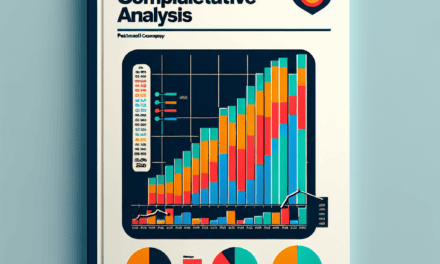“Global Markets Ripple as ‘America First’ Redefines Trade Dynamics.”
Introduction
The election of Donald Trump as the 45th President of the United States marked a significant shift in the country’s economic and foreign policy landscape, encapsulated by his “America First” doctrine. This policy framework, emphasizing protectionism, renegotiation of trade deals, and prioritization of American economic interests, sent ripples through global markets. Investors and international stakeholders grappled with the potential implications of a U.S. retreat from multilateral trade agreements and a pivot towards bilateral negotiations. The uncertainty surrounding trade relations, particularly with key partners such as China, the European Union, and NAFTA members, led to volatility in financial markets. Currencies fluctuated, stock markets experienced turbulence, and global supply chains faced potential disruptions. As the world adjusted to this new paradigm, the long-term effects of Trump’s policies on global trade dynamics and economic growth remained a focal point of analysis and debate.
Impact Of America First Policy On Global Trade Relations
The “America First” policy, championed by former President Donald Trump, has had a profound impact on global trade relations, reshaping the dynamics of international commerce. This policy, which prioritized American economic interests, led to significant shifts in trade agreements, tariffs, and diplomatic relations worldwide. As countries adjusted to the new paradigm, the global markets experienced a ripple effect, influencing economic strategies and alliances.
Initially, the “America First” policy aimed to reduce the United States’ trade deficits and bring manufacturing jobs back to American soil. This approach involved renegotiating trade agreements, such as the North American Free Trade Agreement (NAFTA), which was replaced by the United States-Mexico-Canada Agreement (USMCA). The renegotiation sought to create more favorable terms for American workers and industries. However, the policy also introduced a series of tariffs on imports, particularly targeting China, which led to a trade war between the two largest economies in the world.
The imposition of tariffs had immediate consequences on global markets. As the United States levied tariffs on Chinese goods, China retaliated with its own set of tariffs on American products. This tit-for-tat escalation created uncertainty in the markets, affecting supply chains and increasing costs for businesses and consumers alike. Companies that relied on international supply chains faced disruptions, prompting them to reconsider their sourcing strategies and, in some cases, relocate production to other countries to avoid tariffs.
Moreover, the “America First” policy prompted other nations to reassess their trade relationships with the United States. Countries that were heavily dependent on the American market began to diversify their trade partners to mitigate the risks associated with the policy’s protectionist stance. This shift led to the strengthening of regional trade agreements, such as the Comprehensive and Progressive Agreement for Trans-Pacific Partnership (CPTPP) and the Regional Comprehensive Economic Partnership (RCEP), which excluded the United States. These agreements aimed to facilitate trade among member countries, reducing tariffs and fostering economic cooperation.
In addition to altering trade agreements, the “America First” policy also influenced global economic alliances. As the United States adopted a more unilateral approach, traditional allies found themselves at odds with American policies. This divergence prompted some countries to seek closer ties with other major economies, such as the European Union and China, to counterbalance the United States’ influence. Consequently, the global economic landscape became more multipolar, with power and influence distributed among several key players rather than being dominated by a single nation.
Despite the challenges posed by the “America First” policy, it also spurred innovation and adaptation within global markets. Companies and countries alike were compelled to explore new markets, invest in technology, and enhance their competitiveness to thrive in an increasingly complex trade environment. This drive for innovation has led to advancements in areas such as automation, digital trade, and sustainable practices, which continue to shape the future of global commerce.
In conclusion, the “America First” policy significantly impacted global trade relations, prompting a reevaluation of economic strategies and alliances worldwide. While it introduced challenges and uncertainties, it also catalyzed innovation and adaptation, ultimately reshaping the global economic landscape. As countries continue to navigate this new reality, the lessons learned from this period will undoubtedly influence future trade policies and international cooperation.
Shifts In International Investment Due To America First
The implementation of the America First policy under former President Donald Trump marked a significant shift in the United States’ approach to international trade and investment. This policy, characterized by a focus on domestic economic growth and a reduction in trade deficits, has had profound implications for global markets. As the United States sought to renegotiate trade agreements and impose tariffs on foreign goods, international investors were compelled to reassess their strategies, leading to notable shifts in global investment patterns.
Initially, the America First policy created a climate of uncertainty in international markets. Investors, wary of potential trade wars and protectionist measures, began to reevaluate their portfolios. The imposition of tariffs on Chinese goods, for instance, not only strained U.S.-China relations but also disrupted global supply chains. Consequently, companies with significant exposure to these markets faced increased volatility, prompting investors to seek safer havens for their capital. This shift was evident in the increased flow of investments into regions perceived as more stable, such as Europe and Southeast Asia, where governments maintained more predictable trade policies.
Moreover, the policy’s emphasis on reviving American manufacturing and reducing reliance on foreign imports led to a reallocation of resources within the United States. Domestic industries, particularly those in steel and aluminum, experienced a resurgence as tariffs made foreign alternatives more expensive. This revitalization attracted both domestic and foreign investors eager to capitalize on the growth potential of these sectors. However, this inward focus also meant that American companies with significant international operations faced challenges, as retaliatory tariffs from other nations affected their competitiveness abroad.
In addition to altering investment flows, the America First policy also influenced currency markets. The U.S. dollar experienced fluctuations as trade tensions ebbed and flowed. At times, the dollar strengthened due to its status as a safe-haven currency amidst global uncertainty. However, concerns over the long-term impact of protectionist policies on the U.S. economy occasionally led to periods of depreciation. These currency movements had ripple effects on international investments, as investors adjusted their positions to hedge against potential losses.
Furthermore, the policy’s impact extended to emerging markets, which often rely heavily on exports to the United States. Countries in Latin America and Asia, for example, faced challenges as demand for their goods fluctuated in response to changing U.S. trade policies. This uncertainty prompted some emerging market economies to diversify their trade partnerships, seeking to reduce their dependence on the American market. As a result, new investment opportunities arose in regions that successfully pivoted towards alternative markets, attracting investors looking for growth prospects outside the traditional U.S.-centric trade framework.
In conclusion, the America First policy under Donald Trump significantly reshaped global investment landscapes. By prioritizing domestic economic interests and altering trade dynamics, the policy prompted investors to reconsider their strategies, leading to shifts in capital flows and investment priorities. While some sectors within the United States benefited from increased attention and resources, the broader implications for international markets were complex and multifaceted. As global investors continue to navigate the evolving trade environment, the legacy of the America First policy serves as a reminder of the interconnectedness of global economies and the far-reaching impact of national policies on international investment trends.
America First And Its Influence On Global Supply Chains
The “America First” policy, championed by former President Donald Trump, has had a profound impact on global supply chains, reshaping the dynamics of international trade and economic relations. This policy, which prioritized domestic manufacturing and sought to reduce the United States’ reliance on foreign imports, has led to significant shifts in how global markets operate. As countries and companies around the world adjusted to this new reality, the ripple effects have been felt across various sectors, from manufacturing to technology.
Initially, the “America First” policy aimed to bolster domestic industries by imposing tariffs on imported goods, particularly from China. This move was intended to encourage American companies to produce goods domestically, thereby creating jobs and stimulating the U.S. economy. However, the imposition of tariffs also led to retaliatory measures from other countries, resulting in a trade war that disrupted established supply chains. Consequently, businesses that relied on international suppliers faced increased costs and uncertainties, prompting them to reevaluate their sourcing strategies.
In response to these challenges, many companies began to diversify their supply chains, seeking to reduce their dependence on any single country. This shift was not only a reaction to the tariffs but also a strategic move to mitigate risks associated with geopolitical tensions. As a result, countries in Southeast Asia, such as Vietnam and Thailand, emerged as attractive alternatives for manufacturing and sourcing. These nations offered competitive labor costs and favorable trade agreements, making them viable options for companies looking to maintain their global competitiveness.
Moreover, the “America First” policy accelerated the trend of reshoring, where companies bring manufacturing operations back to their home countries. While this movement was already gaining traction due to advancements in automation and rising labor costs in traditional manufacturing hubs, the policy provided an additional impetus. By reshoring, companies aimed to reduce their exposure to international trade disputes and ensure greater control over their production processes. However, this transition was not without its challenges, as it required significant investments in technology and infrastructure to make domestic production economically viable.
In addition to reshoring, the policy also spurred innovation in supply chain management. Companies increasingly adopted digital technologies, such as artificial intelligence and blockchain, to enhance transparency and efficiency in their operations. These technologies enabled businesses to better track their supply chains, optimize inventory management, and respond more swiftly to disruptions. Consequently, the integration of digital solutions became a critical component of modern supply chain strategies, allowing companies to adapt to the evolving global landscape.
While the “America First” policy has undoubtedly reshaped global supply chains, its long-term impact remains a subject of debate. On one hand, it has encouraged companies to rethink their sourcing strategies and invest in domestic production capabilities. On the other hand, it has also led to increased protectionism and trade tensions, which could hinder global economic growth. As the world continues to grapple with these challenges, the future of global supply chains will likely depend on the ability of countries and companies to strike a balance between national interests and international cooperation.
In conclusion, the “America First” policy has had a significant influence on global supply chains, prompting companies to diversify their sourcing strategies, invest in domestic production, and embrace digital technologies. While these changes have brought about new opportunities, they have also introduced complexities that require careful navigation. As global markets continue to evolve, the lessons learned from this policy will undoubtedly shape the future of international trade and economic relations.
The Role Of Tariffs In Trump’s America First Strategy
The “America First” policy, championed by former President Donald Trump, marked a significant shift in the United States’ approach to international trade and economic relations. Central to this strategy was the implementation of tariffs, which were intended to protect American industries and jobs by making imported goods more expensive and less competitive compared to domestic products. As the global markets reacted to these changes, the role of tariffs in Trump’s America First strategy became a focal point of economic discourse.
Initially, the imposition of tariffs was aimed at addressing trade imbalances, particularly with China, which was perceived as a major threat to American manufacturing and economic stability. By levying tariffs on a wide range of Chinese goods, the Trump administration sought to pressure China into altering its trade practices, which were often criticized for being unfair and detrimental to U.S. interests. This move was not without precedent, as tariffs have historically been used as a tool to protect domestic industries. However, the scale and scope of these tariffs were unprecedented in recent history, leading to significant repercussions in global markets.
As the tariffs took effect, they triggered a series of retaliatory measures from affected countries, most notably China, which imposed its own tariffs on American exports. This tit-for-tat escalation led to what many described as a trade war, with both sides suffering economic consequences. For instance, American farmers, who relied heavily on exports to China, found themselves caught in the crossfire, facing reduced demand and lower prices for their products. Consequently, the U.S. government had to implement aid packages to support these farmers, highlighting the domestic challenges posed by the tariff strategy.
Despite these challenges, the Trump administration argued that the tariffs were necessary to level the playing field and encourage the repatriation of manufacturing jobs to the United States. The idea was that by making imports more expensive, American companies would be incentivized to produce goods domestically, thereby boosting local employment and economic growth. While there were instances of companies relocating production back to the U.S., the overall impact on job creation was mixed, with some industries benefiting more than others.
Moreover, the tariffs had broader implications for global supply chains, which had become increasingly interconnected over the decades. Companies that relied on imported components faced higher costs, which were often passed on to consumers in the form of higher prices. This, in turn, affected consumer spending and economic growth, both in the U.S. and abroad. As businesses and governments grappled with these changes, the role of tariffs in shaping international trade dynamics became a subject of intense debate.
In conclusion, the use of tariffs in Trump’s America First strategy had far-reaching effects on global markets, influencing trade relations, economic policies, and business strategies worldwide. While the intended goal was to protect American interests and promote domestic growth, the reality was more complex, with both positive and negative outcomes. As the world continues to navigate the challenges of globalization and economic interdependence, the lessons learned from this period will undoubtedly inform future trade policies and strategies. The legacy of Trump’s tariff strategy serves as a reminder of the delicate balance between protecting national interests and fostering international cooperation in an increasingly interconnected world.
Global Market Volatility In Response To America First
The global markets have experienced significant volatility in response to the “America First” policy championed by former President Donald Trump. This policy, which prioritized American economic interests, has had far-reaching implications for international trade, investment, and economic relations. As countries around the world grapple with the effects of this policy, the global markets have reacted in various ways, reflecting both uncertainty and adaptation to the new economic landscape.
Initially, the “America First” policy led to heightened tensions in international trade relations. The imposition of tariffs on imports from key trading partners, such as China and the European Union, triggered retaliatory measures, resulting in a trade war that disrupted global supply chains. This uncertainty caused fluctuations in stock markets worldwide, as investors grappled with the potential impact on corporate earnings and economic growth. The volatility was further exacerbated by concerns over the potential for a global economic slowdown, as countries adjusted to the new trade dynamics.
Moreover, the policy’s emphasis on renegotiating trade agreements to favor American interests led to a reevaluation of existing trade partnerships. The renegotiation of the North American Free Trade Agreement (NAFTA), which resulted in the United States-Mexico-Canada Agreement (USMCA), exemplified this shift. While the new agreement aimed to create a more balanced trade environment, the process of renegotiation introduced uncertainty into the markets, as businesses and investors awaited the final terms and their implications for cross-border trade.
In addition to trade, the “America First” policy influenced foreign direct investment (FDI) flows. The focus on domestic economic growth and job creation encouraged multinational corporations to reconsider their investment strategies. Some companies opted to relocate production facilities back to the United States, while others sought to diversify their investments to mitigate risks associated with potential trade barriers. This shift in investment patterns contributed to fluctuations in currency markets, as changes in capital flows affected exchange rates.
Furthermore, the policy’s impact extended to global alliances and geopolitical relations. The United States’ withdrawal from international agreements, such as the Paris Climate Accord and the Trans-Pacific Partnership (TPP), signaled a move towards unilateralism. This shift prompted other countries to reassess their alliances and trade strategies, leading to the formation of new regional trade agreements and partnerships. The resulting realignment of global economic relationships introduced additional layers of complexity and uncertainty into the markets.
Despite the challenges posed by the “America First” policy, some sectors experienced positive outcomes. For instance, industries that benefited from tariff protections, such as steel and aluminum, saw a temporary boost in domestic production and employment. However, these gains were often offset by increased costs for industries reliant on imported materials, highlighting the nuanced impact of the policy on different sectors of the economy.
As the global markets continue to navigate the aftermath of the “America First” policy, the emphasis on national interests over multilateral cooperation remains a key factor influencing economic dynamics. While some countries have adapted to the new environment by strengthening regional ties and diversifying trade partners, others continue to face challenges in adjusting to the evolving landscape. Ultimately, the long-term effects of the policy on global markets will depend on the ability of countries to balance national priorities with the benefits of international collaboration. As such, the ongoing dialogue between nations will play a crucial role in shaping the future of global economic relations.
Long-term Economic Implications Of America First Policy
The “America First” policy, championed by former President Donald Trump, has had profound implications on global markets, reshaping international trade dynamics and economic relationships. This policy, primarily characterized by protectionist measures, aimed to prioritize American economic interests by reducing trade deficits and reviving domestic industries. However, its long-term economic implications extend far beyond the United States, influencing global markets in multifaceted ways.
Initially, the “America First” policy led to the imposition of tariffs on a range of imported goods, notably from China and the European Union. These tariffs were intended to protect American industries from foreign competition and encourage domestic production. However, they also triggered retaliatory measures from affected countries, leading to a tit-for-tat trade war that disrupted global supply chains. As a result, businesses worldwide faced increased costs and uncertainties, prompting a reevaluation of supply chain strategies. Consequently, some companies began diversifying their supply sources to mitigate risks associated with trade tensions, thereby altering traditional trade routes and partnerships.
Moreover, the policy’s emphasis on bilateral trade agreements over multilateral ones marked a significant shift in international trade negotiations. By prioritizing one-on-one deals, the United States sought to leverage its economic power to secure more favorable terms. This approach, however, often sidelined smaller economies and undermined the role of established multilateral institutions like the World Trade Organization. Over time, this shift has contributed to a more fragmented global trade environment, where regional agreements and alliances have gained prominence. As countries adapt to this new landscape, the long-term implications for global trade governance remain uncertain.
In addition to trade, the “America First” policy has had lasting effects on foreign direct investment (FDI) flows. By creating an environment of economic nationalism, the policy inadvertently discouraged some foreign investors who perceived the United States as a less welcoming destination. This shift in investor sentiment prompted some multinational corporations to reconsider their investment strategies, leading to a redistribution of FDI to other regions perceived as more stable or open. Consequently, emerging markets, particularly in Asia and Africa, have seen increased investment as companies seek new growth opportunities outside the traditional Western markets.
Furthermore, the policy’s focus on energy independence and deregulation has had significant implications for global energy markets. By promoting domestic energy production, particularly in fossil fuels, the United States has altered the global energy supply landscape. This shift has affected global oil prices and influenced the energy strategies of other major producers. Additionally, the emphasis on deregulation has raised concerns about environmental sustainability, prompting debates on balancing economic growth with ecological responsibility.
In conclusion, the “America First” policy has left an indelible mark on global markets, with long-term economic implications that continue to unfold. While it aimed to bolster American economic interests, its ripple effects have reshaped international trade, investment, and energy dynamics. As the world navigates this evolving landscape, the challenge lies in fostering cooperation and stability amidst shifting economic paradigms. Ultimately, the legacy of the “America First” policy underscores the interconnectedness of global markets and the need for collaborative approaches to address shared economic challenges.
Comparative Analysis Of America First And Globalization Trends
The “America First” policy, championed by former President Donald Trump, marked a significant shift in the United States’ approach to international trade and diplomacy. This policy, characterized by a focus on national interests and economic protectionism, has had profound implications for global markets. To understand its impact, it is essential to compare it with the broader trends of globalization that have dominated the world economy for decades.
Globalization, a process that has facilitated the free flow of goods, services, and capital across borders, has been a driving force behind economic growth and integration. It has enabled countries to specialize in industries where they have a comparative advantage, leading to increased efficiency and innovation. However, globalization has also been criticized for contributing to job losses in certain sectors, income inequality, and the erosion of national sovereignty. In contrast, the “America First” policy sought to address these concerns by prioritizing domestic industries and reducing reliance on foreign imports.
One of the most notable aspects of the “America First” policy was its emphasis on renegotiating trade agreements. The Trump administration argued that existing agreements, such as the North American Free Trade Agreement (NAFTA), were unfair to American workers and industries. Consequently, the United States-Mexico-Canada Agreement (USMCA) was introduced as a replacement, aiming to create a more balanced trade environment. While this move was intended to protect American jobs, it also led to uncertainty in global markets as investors and businesses adjusted to the new trade landscape.
Moreover, the imposition of tariffs on imports from key trading partners, including China and the European Union, further exemplified the protectionist stance of the “America First” policy. These tariffs were designed to encourage domestic production and reduce trade deficits. However, they also sparked retaliatory measures, leading to trade tensions and volatility in global markets. The resulting trade wars disrupted supply chains and increased costs for businesses and consumers alike, highlighting the interconnected nature of the global economy.
In contrast, globalization trends have generally favored the reduction of trade barriers and the promotion of multilateral cooperation. Organizations such as the World Trade Organization (WTO) have played a crucial role in facilitating international trade and resolving disputes. The “America First” policy, however, often bypassed these multilateral frameworks in favor of bilateral negotiations, reflecting a shift towards a more unilateral approach to international relations.
Despite the challenges posed by the “America First” policy, it is important to recognize that it also prompted a reevaluation of globalization’s impact on domestic economies. The policy highlighted the need for countries to balance global integration with the protection of their own economic interests. As a result, some nations have begun to adopt more nuanced approaches, seeking to benefit from globalization while safeguarding their industries and workers.
In conclusion, the “America First” policy introduced by Donald Trump represented a departure from the prevailing trends of globalization, emphasizing national interests and economic protectionism. While it aimed to address legitimate concerns about the impact of globalization on domestic economies, it also led to increased uncertainty and volatility in global markets. As countries continue to navigate the complexities of the global economy, the lessons learned from this policy will likely inform future approaches to international trade and cooperation. The ongoing dialogue between protectionism and globalization will shape the economic landscape for years to come, as nations strive to find a balance that promotes both national prosperity and global stability.
Q&A
1. **Question:** How did global stock markets initially react to Trump’s “America First” policy?
**Answer:** Global stock markets experienced volatility, with some indices dropping due to concerns over potential trade wars and protectionist measures impacting international trade.
2. **Question:** What impact did the “America First” policy have on U.S. trade relations?
**Answer:** The policy led to strained trade relations, with the U.S. imposing tariffs on several countries, prompting retaliatory measures and affecting global trade dynamics.
3. **Question:** How did the policy affect the value of the U.S. dollar?
**Answer:** The U.S. dollar experienced fluctuations, initially strengthening due to expectations of economic growth but later facing pressure from trade tensions and uncertainty.
4. **Question:** What was the response of emerging markets to the “America First” policy?
**Answer:** Emerging markets faced challenges, including capital outflows and currency depreciation, as investors sought safer assets amid global trade uncertainties.
5. **Question:** How did the policy influence global supply chains?
**Answer:** The policy disrupted global supply chains, as companies reconsidered their manufacturing and sourcing strategies to mitigate the impact of tariffs and trade barriers.
6. **Question:** What sectors were most affected by the “America First” policy?
**Answer:** Sectors such as manufacturing, agriculture, and technology were significantly affected, facing increased costs and market access issues due to tariffs and trade disputes.
7. **Question:** How did international organizations respond to the “America First” policy?
**Answer:** International organizations like the WTO and IMF expressed concerns about the policy’s impact on global trade stability and economic growth, advocating for multilateral cooperation.
Conclusion
The implementation of Trump’s America First policy had significant implications for global markets, characterized by increased volatility and uncertainty. The policy’s emphasis on protectionism, including tariffs and renegotiation of trade agreements, led to disruptions in international trade relationships and supply chains. This resulted in fluctuating stock markets, with sectors reliant on global trade, such as manufacturing and agriculture, experiencing particular instability. Additionally, the policy prompted retaliatory measures from trading partners, further exacerbating market tensions. While some domestic industries benefited from the protectionist stance, the overall impact on global markets was mixed, with long-term effects on international economic cooperation and investment flows. The policy underscored the interconnectedness of global economies and highlighted the challenges of balancing national interests with global economic stability.





